32+ Sample License Agreements
-
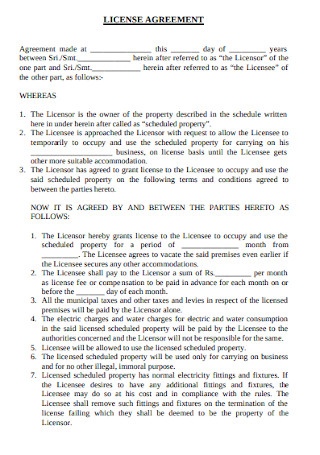
Sample License Agreement
download now -
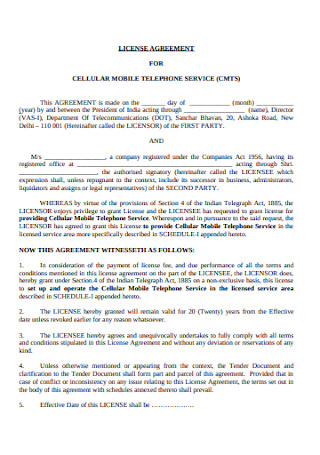
Telecommunication Department License Agreement
download now -
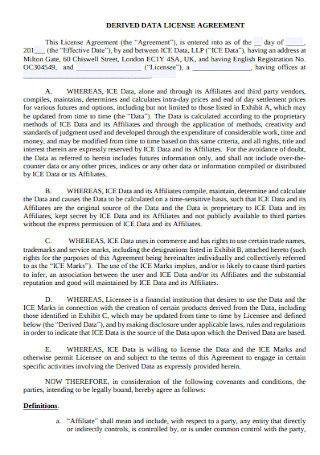
Derived Data License Agreement
download now -
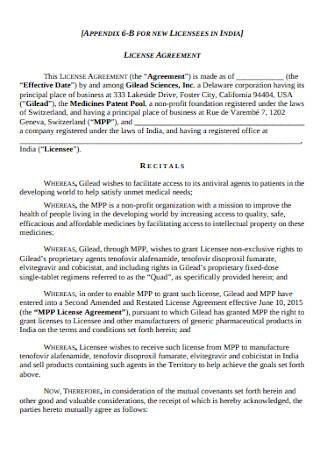
Business License Agreement
download now -
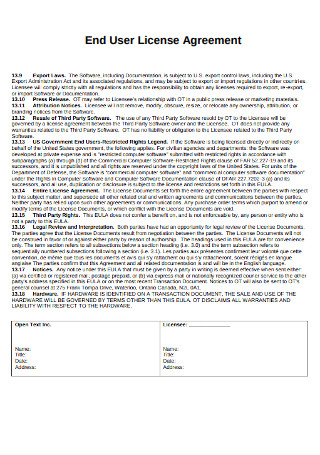
End User License Agreement
download now -
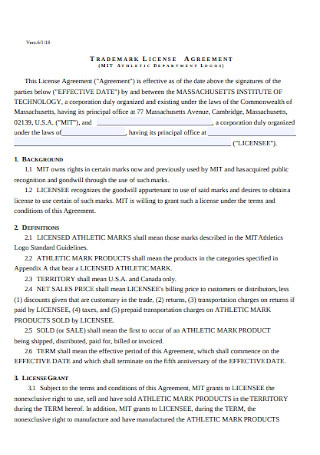
Trademark License Agreement
download now -
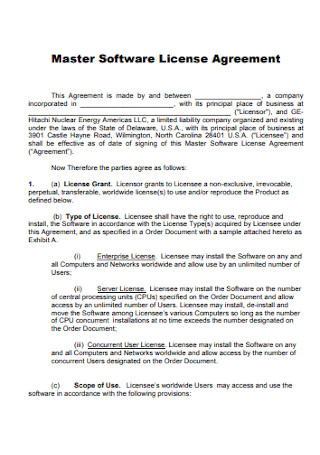
Master Software License Agreement
download now -

Professional License Agreement
download now -
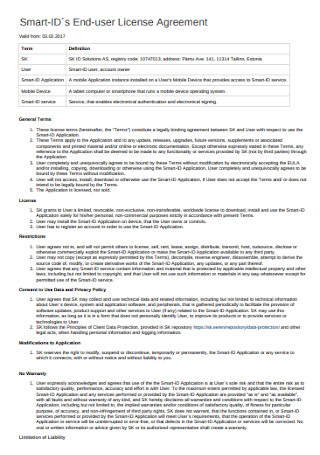
Sample End User License Agreement
download now -
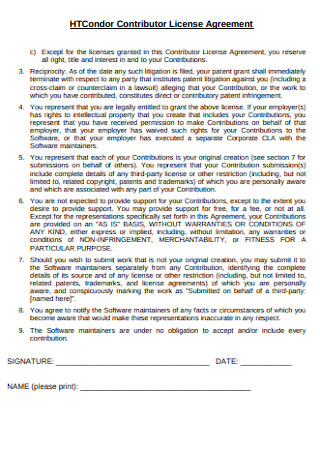
Contributor License Agreement
download now -
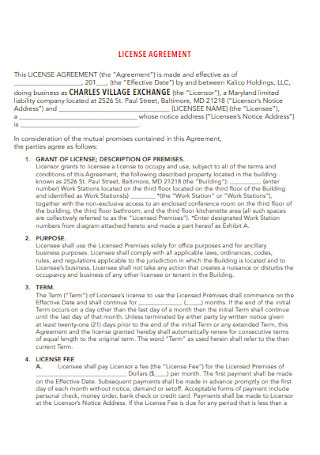
Company License Agreement
download now -
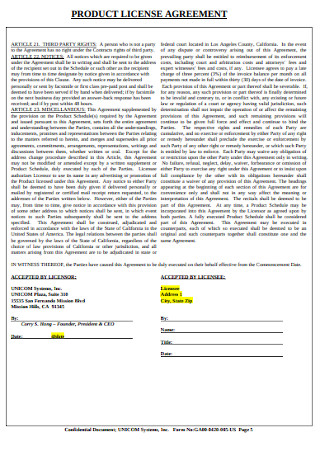
Product License Agreement
download now -
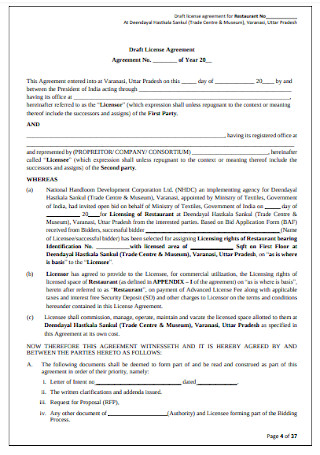
Draft License Agreement
download now -
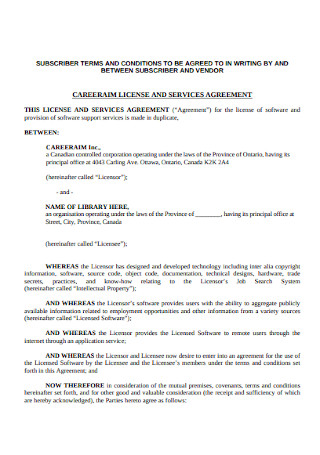
License and Services Agreement
download now -
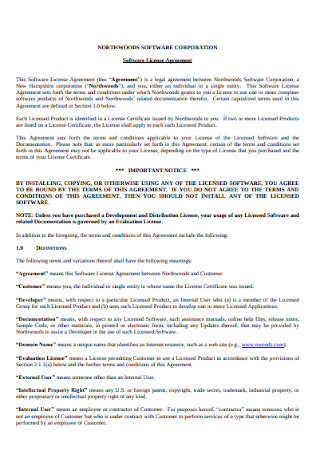
Software Corporation License Agreement
download now -
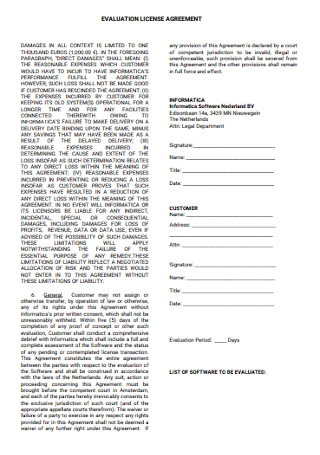
Evaluation License Agreement
download now -
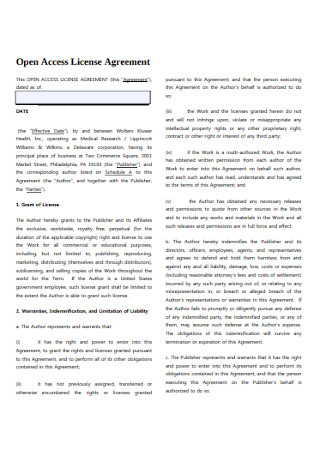
Open Access License Agreement
download now -
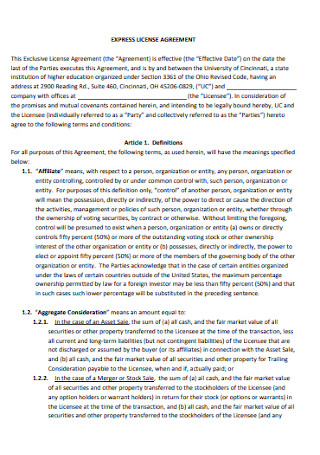
Express License Agreement
download now -

License Agreement Example
download now -
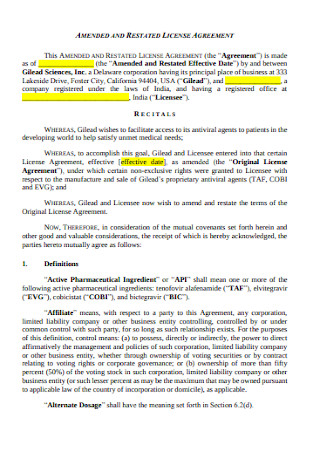
Amended and Restated License Agreement
download now -

Basic Company License Agreement
download now -

Licensor License Agreement
download now -
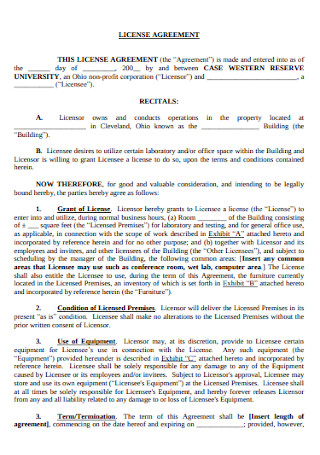
University License Agreement
download now -
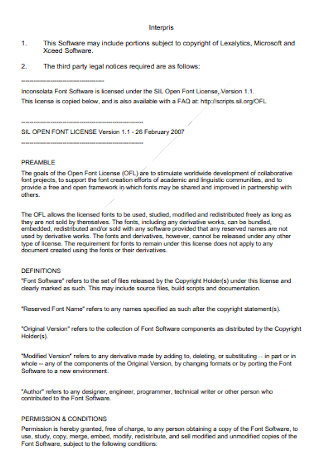
Formal License Agreement
download now -
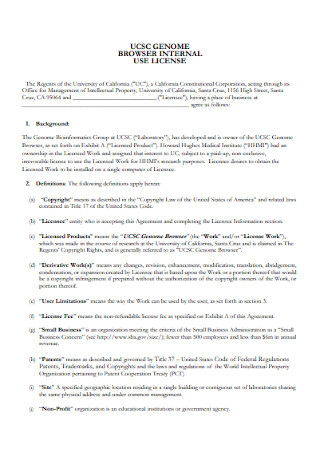
Site License Agreement
download now -
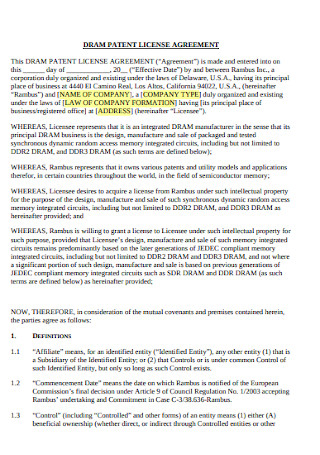
Dram Patent License Agreement
download now -
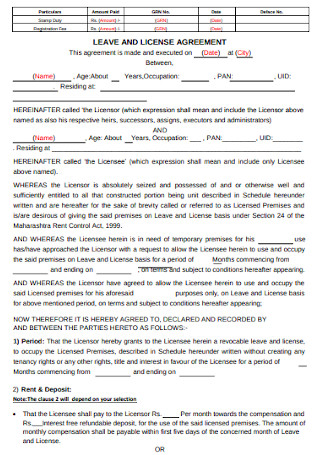
Leave and License Agreement
download now -
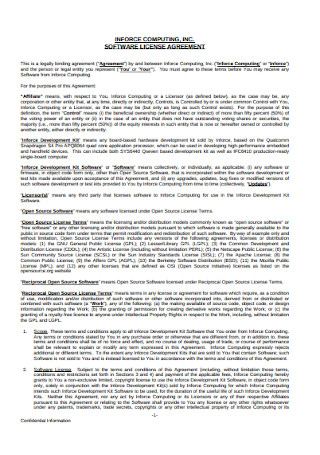
Standard Software License Agreement
download now -

Non-Transferable License Agreement
download now -
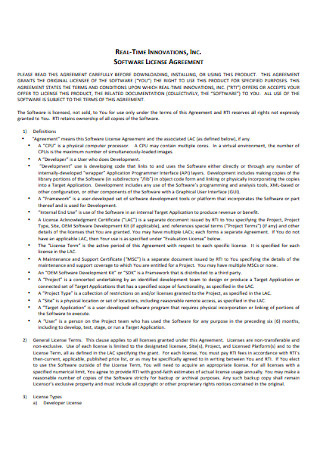
Software Product License Agreement
download now -
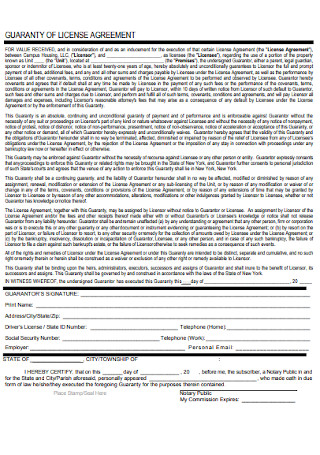
Guaranty of License Agreement
download now -
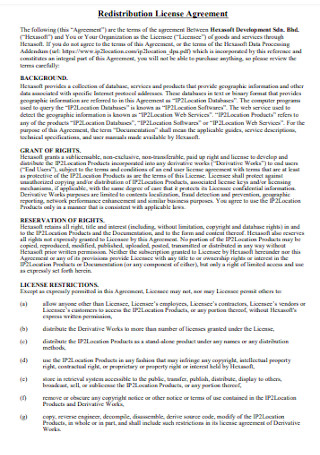
Redistribution License Agreement
download now -
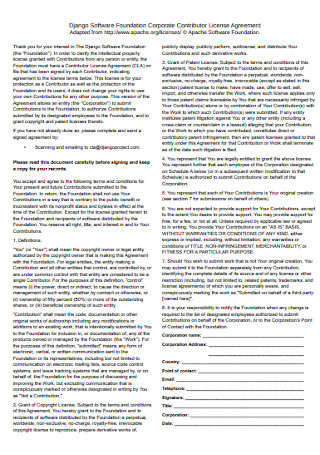
Corporate Contributor License Agreement
download now -
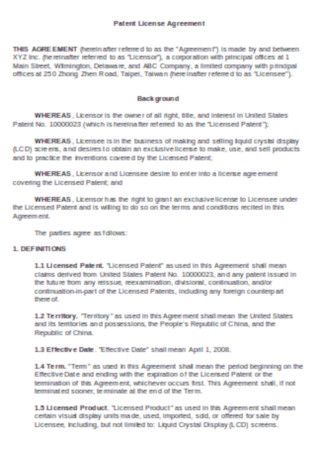
Patient License Agreement
download now -
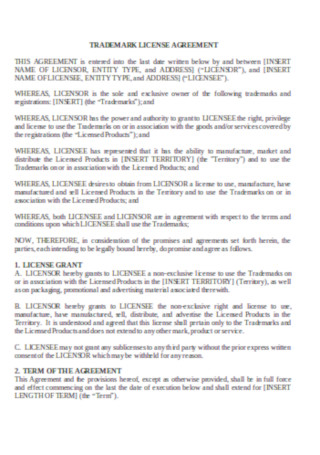
Trademark Licence Agreement Template
download now
FREE License Agreement s to Download
32+ Sample License Agreements
What Is a License Agreement?
Everything You Need to Know About Licensing
How to Formulate a License Agreement Template
FAQs
Is a license agreement different from a lease?
What are the advantages and disadvantages of licensing?
How does a licensor receive royalty payments?
How do you register a logo?
How do I know if someone owns copyright?
What Is a License Agreement?
A license can mean two things—an authorization from the government to practice an occupation (e.g., license for nursing), or a permit property owners give to another to use his/her property (e.g., franchising). In this article, we are going to expound on the latter. Basically, a license agreement is a contract between a licensor and a licensee. The licensee can be any person or business that another entity grants a legal consent to use a property in exchange for payment. For example, a Starbucks franchise may include a license to know its patented system of operation. Note that a patent gives a licensor the right to have full ownership of an invention under the protection of the United States Patent and Trademark Office. Any individual or institution that wants to use a patent should pay and ask permission from the legal owner first.
Everything You Need to Know About Licensing
Many businesses usually take advantage of licensing to produce more profit by allowing other parties to manufacture, use, or sell their property. There are two types of assets that a business can license—intellectual property and technology. For now, we will focus on intellectual property licensing. Examples of intellectual properties are patents, copyrights, trade secrets, and trademarks. While most businesses opt for digital versions of these assets, some still stick with the written form. In this section, let us expound on each type of intellectual property.
How to Formulate a License Agreement Template
Remember that intellectual property can be a song, photo, logo, or trade secret. As mentioned beforehand, a license agreement is a contract an intellectual property owner uses to permit another individual or business to use his/her property. Using a licensing agreement will give the licensor the power to control how his/her property is going to be utilized by the licensee. If you are a business person, you can formulate a license agreement template by following these steps:
Step 1: Input Some Background Information
A license agreement starts with a statement expressing when the contract would operate. Then, it specifies the parties involved, their respective addresses, and the type of agreement. Provisions regarding the operation of the contract will be written below this part.
Step 2: Write Down the License Grant
The license grant recognizes who owns the property and what the property is. This part of the agreement is where the licensor affirms the licensee’s right to use his/her asset according to the agreed-upon terms. Moreover, this section of the contract reports the licensor’s ownership of the property and where the area the license grant applies.
Step 3: Include Details About the Royalty Fee
As previously mentioned, a royalty is a fee given to a licensor for a licensee’s continual use of his/her inventions or original creations. Did you know that musicians take the most interest from royalties? According to Investopedia, Spotify paid about $1 billion for royalties in its first five years since it launched last 2008. Taking this information into account, we can conclude that license agreements are essential since it sets a limit for the fees.
Step 4: Incorporate Terms for Nonpayment
Conditions for defaults give the licensor the liberty to cancel an agreement when the licensee fails to meet his/her obligations. Usually, the licensee will receive a written notice good for 30 days. The 30 days given is a chance for the licensee to correct his mistakes and prevent contract termination.
Step 5: Protect Confidential Information
The phrase “confidential information” is any idea, material, or data a licensor owns. Any specifications the licensor provides will be considered as confidential information. Specifications may include business plans, contracts, financial data, product knowledge, pricing outline, partnerships, and others. The contract should consist of a pledge, on the licensee’s side, to abide by the provisions for confidential information. Moreover, the licensee should agree to non-disclosure, non-copying, and non-application provisions.
Step 6: Don’t Forget Miscellaneous Provisions
These provisions may include the governing law, a contractual rights waiver, or amendments. The governing law depends on which state both parties belong. A contractual rights waiver may state that the failure of one party to comply with the provisions will not automatically result in termination. Instead, the violating party will be given a chance to follow the contract’s requirements. Moreover, amendments may also be done as long as both parties agree.
FAQs
Is a license agreement different from a lease?
Yes, a license agreement is different from a lease. In a license agreement, the property remains to be the licensor’s possession, while in a lease agreement, the tenant exclusively possesses the property. Also, a third party cannot take part in a license agreement, which is in contrast to a lease agreement. Furthermore, it is easier to terminate a license contract compared to a lease contract.
What are the advantages and disadvantages of licensing?
The advantages of licensing include: (1) It produces passive income. (2) It is an opportunity for your business to grow. (3) It is an avenue to reach markets outside your state. (4) It allows you to experience self-employment. Unfortunately, there are also licensing disadvantages, which are the following: (1) An intellectual property can be a prospect for theft. (2) Income is not a guarantee. (3) It may take some time to receive royalties. (4) Licensing only lasts for at least ten years.
How does a licensor receive royalty payments?
Royalties depend on what kind of property a licensor has. Fees on items like books, music, and patents will depend on how many units will sell. Payments for mineral, gas, and oil depend on the amount of volume that sells. An example is the U.S. Copyright Office collecting royalty fees from importers, manufacturers, satellite carriers, and cable operators for public licenses.
How do you register a logo?
To register a logo under the care of the USPTO, you can use the Trademark Electronic Application System (TEAS). You can upload your photo by making use of a .jpg file. Usually, a logo can have a black and white trademark color that will allow you to select other colors later on. The application system will provide a space for you to write the exact words your logo should have. Additionally, payment for filing a trademark ranges from $275-$325. However, the corresponding fees are subject to change.
How do I know if someone owns copyright?
The U.S. Copyright Office has accessible copyright information available for searching. Transfers, renewals, and registrations of ownership done before the year 1978 has to be manually searched in their office. Office staff members will do a search of records upon request for a fee. If you don’t want to pay for a fee, you are allowed to search the records for yourself.
A license agreement is a document mostly used for business. For a licensor, a license agreement is one way to make more profit by letting another do the work he/she couldn’t do for his/her invention. For a licensee, using this contract will be for his/her protection. It is not practical to use someone else’s property and get sued and forced to pay the licensor in the end. You might as well pay for fees legally. Moreover, businesses should be aware of intellectual property rights by searching for records in the USPTO. Entering into a license agreement with a licensor is one step to make a business flourish. As you’ve seen in our example earlier, Nestle took advantage of this agreement without thinking much about the royalties they pay to Starbucks. They did it to improve their brand name, and as you may have observed, Nestle is still on top of the food processing industry.
